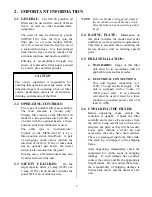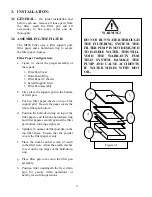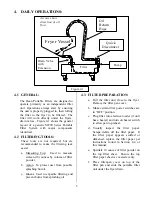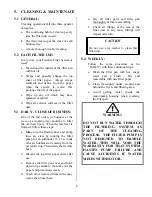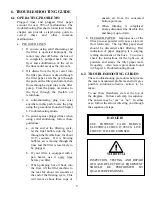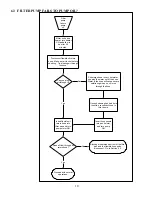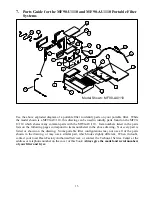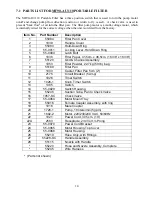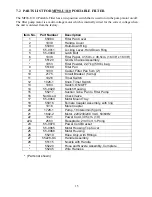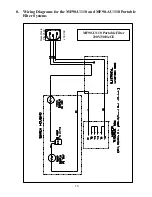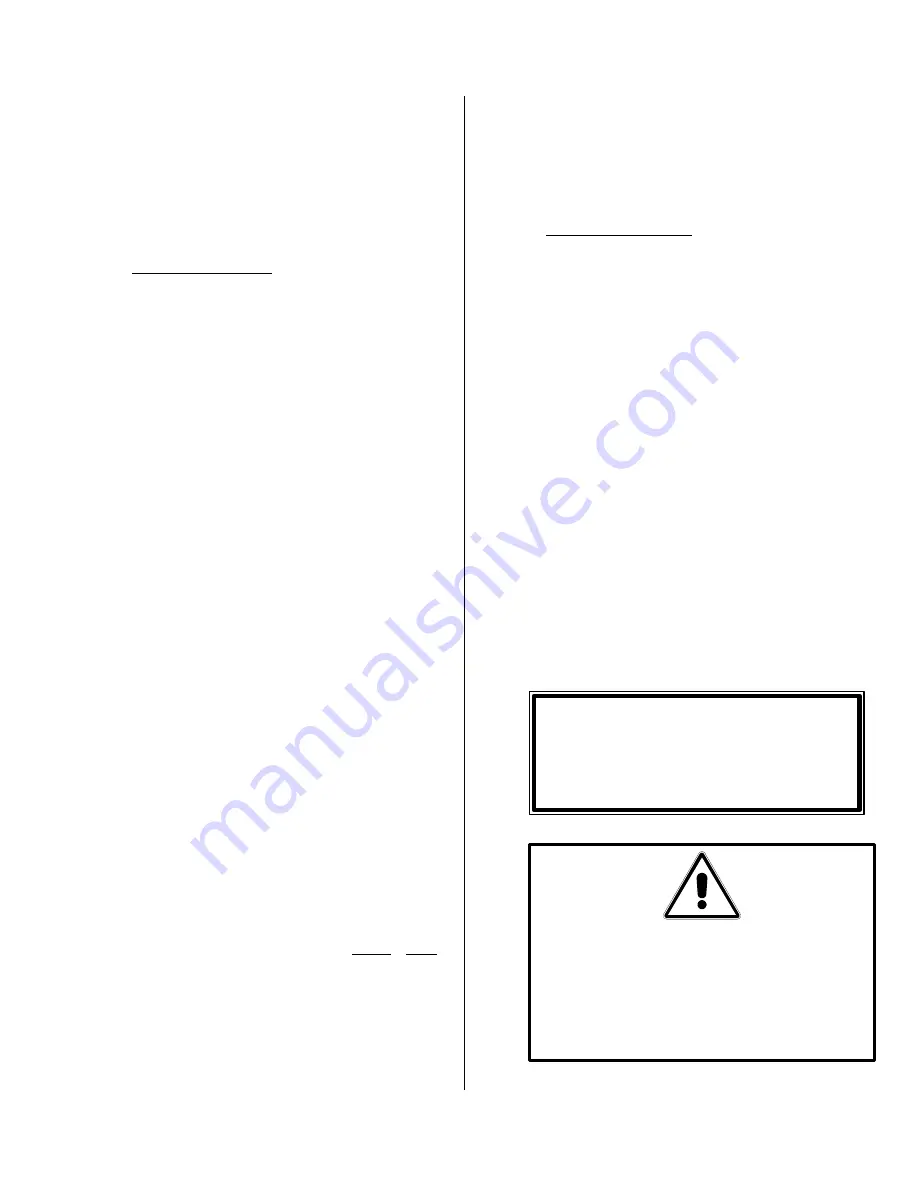
9
6. TROUBLESHOOTING GUIDE
6.1 OPERATING PROBLEMS:
Plugged lines and plugged filter paper
account for over 90% of malfunctions. The
troubleshooting flowcharts found later in this
chapter can provide a step-by-step guide to
correct these and other common
malfunctions.
a.
PLUGGED LINES:
1.
If you are using solid shortening and
the filter is operated improperly, the
motor may shut off before the hot oil
is completely pumped back into the
fryer and solidification of the oil in
the lines could occur as the oil cools.
2.
Oil drains from the fryer vessel into
the filter pan, then it is drawn through
the filter paper, exits the pan through
the ports on the filter pan bottom, then
flows through a rigid tube to the filter
pump. From the pump, oil returns to
the fryer through the flexible oil
return hose.
3.
A solid-shortening plug can exist
anywhere in this path; locate the plug
using the procedures found in Chapter
6, Troubleshooting Guide.
4.
To guard against plugged lines when
using solid shortening, follow these
guidelines:
a.
At the end of the filtering cycle,
let the filter bubble into the fryer
through the flexible hose for about
10-15 seconds. If it is blowing
bubbles, air is moving through the
lines and the filter is less likely to
be plugged.
b.
If your filter is equipped with a
pan heater, use it every time
before you filter.
c.
When pumping hot oil back into
the fryer, tilt the filter machine to
the rear for about ten seconds at
the end of the filtering cycle. This
will remove about three cups of
unseen oil from the concealed
bottom port area.
d.
When filtering is completed,
always disconnect the flexible line
and hang it up to drain.
b. PLUGGED PAPER: Improper use of the
filter pre-coat powder will cause a slow oil
flow return rate. The top filter paper sheet
should be discarded after filtering. First
indication of paper plugging is a surging,
jerking movement of the hose. To correct,
check the instructions for the right use of
powders and scrape the filter paper more
frequently. Also review procedures found
in Chapter 6, Troubleshooting Guide.
6.2 TROUBLESHOOTING GUIDES:
These troubleshooting procedures help locate
the most encountered problems and will give
possible solutions/corrective action to be
taken.
To use these flowcharts, start at the top of
the diagram. Follow each step in sequence.
The answer may be “yes” or “no”. In either
case, follow the arrows directing you through
the sequence of steps.
WARNING!
INSPECTION, TESTING, AND REPAIR
OF GAS OR ELECTRICAL EQUIPMENT
SHOULD BE PERFORMED BY
QUALIFIED PERSONNEL.
DANGER!
USE EXTREME CARE DURING
ELECTRICAL CIRCUIT TESTS. LIVE
CIRCUIT WILL BE EXPOSED.




